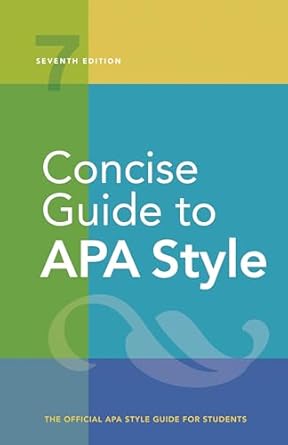[toc]
reference list guide titles series and descriptions
Concise Guide to APA Style: 7th Edition (OFFICIAL)
Page 248 Review
Understanding Reference Lists: A Detailed Commentary
This excerpt delves into the intricacies of creating reference lists, crucial for academic and professional writing.
It highlights specific guidelines for formatting titles, handling series and multivolume works, and incorporating bracketed descriptions for non-traditional sources.
Let’s break down the key points:
Formatting Titles: Precision and Clarity
The text emphasizes the importance of accurate and consistent title formatting.
It states, “For book and report references, enclose in parentheses after the title any additional information given in the publication for its identification and retrieval (e.g., edition, report number, volume number).” This ensures readers can easily locate the source material.
The excerpt further clarifies that, “Do not add a period between the title and the parenthetical information, and do not italicize the parenthetical information.” This attention to detail contributes to a polished and professional reference list.
The guidelines address scenarios involving numbered volumes: “If a numbered volume has its own title, the volume number and title are included as part of the main title, rather than in parentheses (see Chapter 10, Examples 30 and 45).” This nuanced approach demonstrates a thorough understanding of different publication formats.
Punctuation is also addressed: “Finish the title element with a period.
However, if the title ends with a question mark or exclamation point, that punctuation mark replaces the period.” Such details might seem minor, but consistent application ensures clarity and professionalism.
Finally, a pointer to a related section: “See Section 5.7 for how to format titles that appear in the text.” Cross-referencing demonstrates a comprehensive approach to writing and referencing.
Series and Multivolume Works: Navigating Complexity
The passage provides clear instructions on handling series and multivolume works. “For a book that is part of a multivolume work, such as a handbook comprising three volumes, include the series title in the reference list entry.
For examples of titled and untitled volumes, see Chapter 10, Example 30.” This ensures proper attribution and allows readers to understand the context of the cited work.
The text distinguishes between multivolume works and popular book series: “When a book is part of a series of conceptually related but separate works (e.g., popular book series such as Harry Potter or the Chronicles of Narnia), include only the book title, not the series title, in the reference.” The rationale is based on clarity and avoiding confusion: “Depending on the publisher and the series, the series name may be either prominent or hard to find; therefore, we recommend omitting it to avoid confusion (see Chapter 10, Example 31).”
Bracketed Descriptions: Identifying Non-Traditional Sources
The use of bracketed descriptions is explained as a way to clarify the nature of non-peer-reviewed works: “To help identify works outside the peer-reviewed academic literature (i.e., works other than articles, books, reports, etc.), provide a description of the work in square brackets after the title before the period.” This practice enhances transparency and helps readers understand the source’s context.
The text provides several examples: “The description aids readers in identifying and retrieving the work.
Examples of works that include bracketed descriptions are some audiobooks, gray literature (e.g., press releases), audiovisual works (e.g., films, YouTube videos, photographs), software and mobile apps, data sets, manuscripts in preparation, and dissertations and theses.
Bracketed descriptions are also used in social media.” This comprehensive list illustrates the wide range of sources that benefit from this descriptive approach.
Conclusion: A Guide to Precise Referencing
In conclusion, this excerpt provides a valuable guide to creating accurate and informative reference lists.
By focusing on title formatting, handling multivolume works and series, and incorporating bracketed descriptions, it empowers writers to present their sources clearly and professionally.
Adhering to these guidelines enhances the credibility and accessibility of any academic or professional work.
These meticulous guidelines ensure clarity, accuracy, and professionalism in academic writing.
This guide serves as a valuable resource for students, researchers, and professionals striving for excellence in their scholarly work.
Buy full ebook for only $18: https://www.lulu.com/shop/american-psychological-association/concise-guide-to-apa-style-7th-edition-official/ebook/product-rmzpq54.html?page=1&pageSize=4
Reference List Guide Titles Series And Descriptions
Read more: Academic Writing: Mastering Capitalization & Abbreviations


Leave a Reply